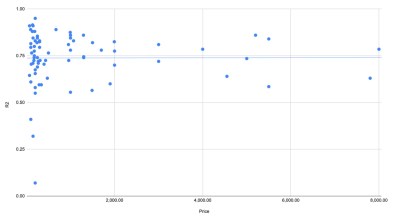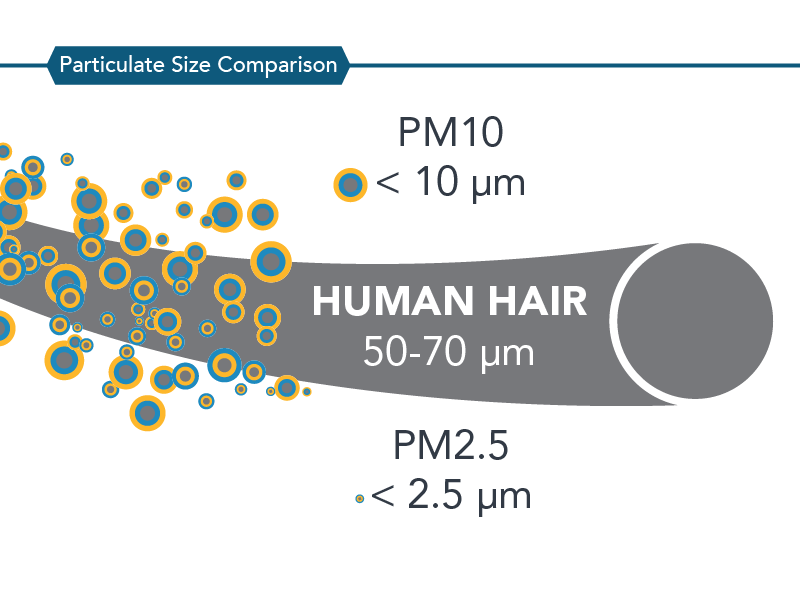Does paying more for air quality monitors (AQMs) make sense? This was the question which [Achim Haug] at the Air Gradient project sought to answer, with the answer being a rather revealing ‘not at all’. Using data from the independent South Coast Air Quality Management District agency (South Coast AQMD), a plot was created of a range of commercially available AQMs for PM2.5 pollutants and their performance against a reference monitor. Here a value of 1.00 would mean performance equal to the (expensive, calibrated) reference.

This plot shows clearly that paying more for an AQM does not get you better performance, with the reason for this explored in a follow-up article by [Achim], where a range of AQMs are checked for which PM2.5 sensors they actually use. Perhaps unsurprisingly, most AQMs use the same PM2.5 sensors, with the sensor module not really affecting the cost of the AQM as they all cost about $10-20 in bulk.
Rather it seems that the other sensors (for CO2, NO2 and other measurements) along with features such as WiFi, LoRa determine much of the price tag. For getting good measurements, properties such as airflow over the sensors, the implemented compensation algorithms are probably the main things you want to look at when purchasing (or building) an AQM.
(Heading image: particulate matter sizes, relative to a human hair. Credit: California ARB)















Matters not if the sensor is located on a pole in a truck stop along a major expressway. Looking at you Cali.
Um, because most people live near roads and you want to detect how much crap the trucks are putting out?
Or should the sensors be only located out in the middle of nowhere?
(Diesel trucks cause a lot of cancer. Maybe a bit less these days.)
At least almost all of them are in the ballpark of the calibrated reference, which is somewhat surprising to me as I figured at least a few would be using some extra cheap and rough guess style sensor trickery or just pretending they have that type of sensor…
I bought a kit from Airgradient (this guy’s company), and would recommend them! The price is good, and the DIY assembly is fun and easy.
A custom printed case with some consideration to mounting it in my apartment, and now I have a very capable sensor platform. I did end up replacing the firmware with ESPHome, because I wanted fully local data to sync to HomeAssistant – and nobody needs to read about the AQI in my living room, but if I was building an outdoor sensor I’d probably upload data too.
I’ve also done the same thing, but I don’t have a 3d printer so I bought the “pro” model with the case — I appreciate that it’s “just” an ESP8266 and off-the-shelf sensor / screen modules on a PCB in a nice injection-molded case. The outdoor one is also nicely built.
I sorta wish I didn’t have to use ESPHome to get local HomeAssistant integration, as I’m not sure if I’m missing out on anything like calibration curves, etc.
Thank you for your support.
We are working on a better integration with ESPHome that will also enable manual CO2 calibration. I’m also working on a section on our website with links to various integrations for the monitor (e.g. ESPHome, Grafana, HomeKit etc).
Achim from AirGradient here (the author of the cited article) . Maya, many thanks for covering the important topic of air quality.
Yes, the good news is that low-cost PM sensors are quite accurate compared to much more expensive reference stations and this is probably one of the reasons the same sensor modules are used also in much more expensive monitors. So as a consumer, and if you are primary interested in PM2.5 measurements there are a lot of good monitors in the sub USD 300 price range that give you useful information.
Another often overlooked aspect is that the frequency of measurements does have an impact on the accuracy but often it is not clear how the monitors exactly measure as it is not published by the manufacturers (and they probably regard this as a trade secret). This is an advantage of open-source projects (like the AirGradient monitors) that make it easy to make changes in the firmware and makes everything transparent.
Why does everyone keep the stupidest crap as trade secrets, the stuff you can find out in an afternoon in a modestly equipped workshop, and maybe spending $50 on destroying it or consumables. I mean it just makes potential users mad, and it won’t even make a competitor blink to reverse engineer it. That’s even if the patent was genuinely non-obvious to someone skilled in the field and actual competitors can’t just have their engineers make a 98% correct guess over a cup of coffee. Who the hell are they trying to keep most of this stuff secret from, uncontacted tribes in the Amazon who still think electricity is sorcery?? I bet it only loses them applications, from hobbyists, small hugely underfunded startups and grad students who need to document their entire method.
Trust me, this is very obnoxious. I’m currently building a “Universal Testing Machine” because some yahoos think they have IP in them that make them worth 8x+ the cost of materials because maybe trade secrets? Thats to find the strength of the bond between cyanoacrylates against nitrided steels! Another thing absent on the internet.
Then, look at metrology lasers. An iodine cell, cheap diode laser, cheap termoelectric blocks, a photodetector, and some open source pid code, and you can have a 200kHz accurate source (Instantaneous, averaged you can probably get it down to 100kHz) that can be used to calibrate all kinds of sources/things, including as a self mixing interferometer to get 200nm precise positioning, or, I suspect, using a PZT (if it can be found for cheap) or maybe even s crazy differential screw mechanism, polarize and split the beam, phase adjust it to 90 degrees out of phase from the original beam, and get measurements in quadrature and get 4x the accuracy, and include a direction of movement of the target….nothing but trade secrets in there from the likes of renishaw, and thor labs ($18K for an iodine stabilized HeNe! – which is certainly a better laser for a calibrated source but not $17K better, and they don’t even sell an iodine stabilized diode laser, but they do want $4k for a bragg grating “single frequency” diode…another insane price!)
The body of knowledge of the world has grown to a point where what was once a marketable trade secret should be considered nothing more than the IP of a lego block. The combination of such blocks can be used to create interesting devices, which in turn would be able to generate new and useful IP, but the IP frenzy brought on in the 90’s is peaking into the most nonsensical things being hidden away. The culture around IP needs to change. Thats not me saying people shouldn’t be able to protect their inventions, merely arguing the distinction as to how to define an invention, or IP.
On the actual subject of air quality meters, cheap sensors may just not work at all. I have a 70% failure to properly read correctly across multiple brands of the same sensor. So there is some “You get what you pay for” in the market, but likely mostly in QA/QC.
*failure to read correctly….always proofread…or never proofread and makes lots of * posts :D
Probably worth pointing out as well that most CO2 sensors aren’t, they’re alcohol (VOC) sensors that guess how much CO2 there is. Usually noted as eCO2 sensor where the “e” mean “equivalent”.
They’re good enough for most uses though. They’re amazingly quick to react to quick puff of something (fly spray, hair spray, perfume etc), but of course the CO2 reading is way too high.
Real CO2 sensors are rather expensive.